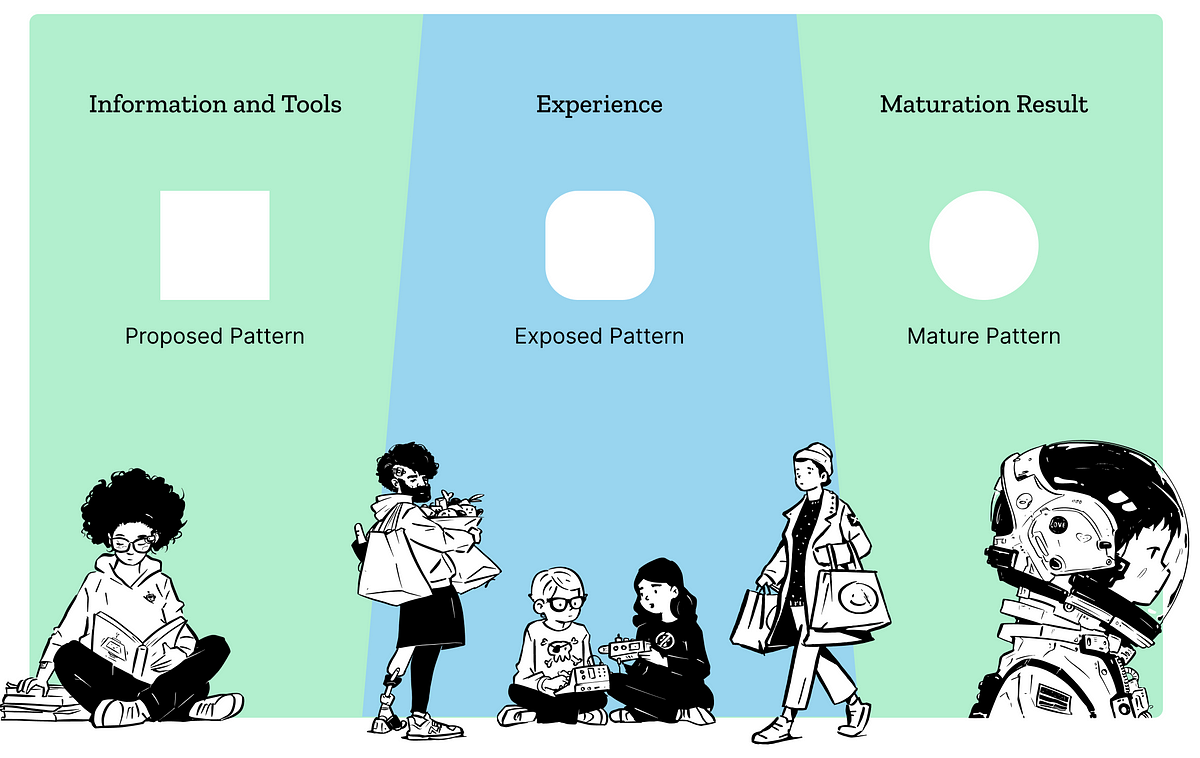
Information vs Experience: how to build mature Design Systems | by @Gustavo Teodoro | Nov, 2023
[ad_1]
We can simplify the difference between these two groups in one word: exposure.
The initiatives related to Information and Tools can be done in a silo by one person or a team, with no exposure to another group required. But the initiatives related to Experience can only be done by exposing yourself and your ideas to another group of people.
“The subject of experience is an exposed subject. From the perspective of experience, what is important is neither the position (our way of positioning), nor the opposition (our way of opposing), nor the imposition (our way of imposing), nor the proposition (our way of proposing), but the exposure, our way of exposing, in all of its vulnerability and risk.” — Jorge Larrosa Bondía
Information and tools are important, but they are not enough. For example, when building an accessible Design System, it’s fundamental to get information about WCAG, and maybe go beyond and try to expand your knowledge about the topic with the brilliant course Practical Accessibility by Sara Soueidan or the magnificent Learn Accessibility Course by Carie Fisher. All this information is definitely going to support a better initial purpose for your patterns and components, although it can’t replace the value of exposing these same patterns and components to real tests with people with disabilities.
It’s only through something like tests with users, who will also be exposed to what’s been being built, that it’s possible to really mature a Design System. Information and tools can support an initial purpose, but it’s not enough to achieve a mature pattern.
“Information is not experience. Moreover, information leaves no room for experience, it is almost the opposite of experience, almost an anti-experience.” — Jorge Larrosa Bondía
Experience is not something that you can get from a Figma Plugin or from the output of a chatbot. It only comes from exposure — from exposing the components and patterns to real users. From being open to exposing yourself as well as someone who designs and/or develops, accepting the possibility that what you built could be completely disconnected from the reality of those who need to use the pattern in their day-to-day life.
It is possible to have an automated testing tool to create a report detailing how many accessibility issues were detected on a certain page of the product, and this information can be valuable. But this information by itself is not capable of representing the real experience of using this pattern from the point of view of a person with disabilities.
The process of generating value to a usable and accessible Design System is strictly related to the level of exposure of the components and patterns to usability and accessibility tests. For a product team, to know that a pattern or component they are adopting was tested with users and people with disabilities are like precious pearls. They can trust that the library of patterns and components they have in their hands has matured beyond being merely a collection of propositions and opinions from a single point of view.
[ad_2]
Source link


